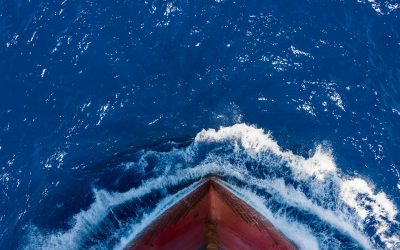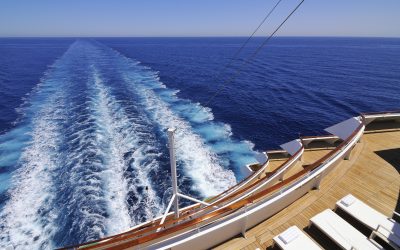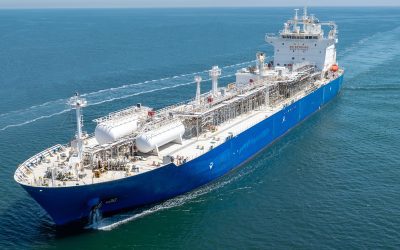A seafarers guide to food safety
Recently 13 seafarers tragically died from what is thought to be food poisoning on board a bulk carrier, and more are seriously ill.
The thoughts of all at Ocean Technologies group are with the families and loved ones of those who died and those who are currently ill.
Whilst the source of the suspected food poisoning is yet to be established, there is a number of preventative measures that can be taken to ensure the safety of seafarers (and indeed passengers).
These can essentially be defined as:
- Preventing food from becoming contaminated
- Preventing the spread of bacteria
Everything mentioned in this guide falls into either of these categories.
How does food become contaminated?
There is a number of ways in which food can become contaminated with bacteria, including:
Personal hygiene
One of the most basic yet often overlooked principles is that of personal hygiene and cleanliness in food handling, storing, preparation, cooking and serving.
Food is easily contaminated by bacteria transmitted by people with a cold, cuts or boils foe example so maintaining impeccable levels of personal hygiene and cleanliness is absolutely critical in preventing the spread of viral infections.
Regular hand washing with an appropriate cleanser and cleanly washed clothing are a bare minimum to ensure the safety of your crew.
Food quality and cleanliness
Many different types of fruit and vegetables for example are often supplied complete with soil from their habitat.
Soil can contain bacteria that is harmful to humans so any food with soil present must be washed.
Modern methods of intensive farming make heavy use of chemicals such as pesticides and weed killers. These are capable of poisoning and constitute another reason to ensure that food is cleaned on arrival.
Food must be thoroughly inspected on arrival for the reasons mentioned so far, but also to ensure that no food is kept that is showing signs of damage, mould or decay as these can spread bacteria too.
Food should only be sourced from reputable suppliers.
Issues can arise with locally sourced food, found ashore in local markets and brought aboard.
Nowhere is this more pertinent that with seafood. It is important to recognize that seafood can be particularly dangerous in terms of its propensity to cause illness amongst your crew.
Fishing is a natural hobby of many seafarers and a ship at anchor can often be seen with lines over the side as crew members supplement their diet with fresh fish.
Most varieties of fish are perfectly safe but there are some extremely dangerous ones.
Eating contaminated fish can result in a type of food poisoning called Ciguatera which can often be found is large reef fish such as barracuda, grouper, red snapper, eel, amberjack and Spanish mackerel.
Mussels, clams and oysters may also be contaminated.
The ciguareta toxins are particularly heat resistant and so contaminated fish cannot be detoxified by cooking.
Given that crew members will naturally want to eat the freshly caught fish the potential to infect part of the crew is high.
It is important that any fish is prepared correctly, fresh fish is coated with slime which organisms that will spoil food. Mud and sand are often present in the gills and all fish should be thoroughly descaled.
Eggs are another source of serious risk. Upon delivery check for broken eggs and discard any as there is the risk of transfer of bacteria from unclean hands and equipment, and if kept in warm conditions they provide a breeding ground for bacterial growth- Salmonella in particular is associated with eggs.
Food storage
Correct storage is absolutely essential to prevent outbreaks of food poisoning and includes temperature, stowage, container type and storage duration
In general terms, storage facilities on board must:
- Be fit for purpose
- Be capable of storing different types of food separately
- Protect stored food from contamination and animal/insect infestation
- Be weatherproof
- Have adequate light control
- Be safe to access at all times
Systems should be created to identify old and new stock, such as ‘by date’ labels or colour codes for example, a procedure sometimes referred to as ‘first-in, first-out’.
Accurate estimating and stockkeeping are essential to storing on a ship, particularly those on long international voyages
Re-arranging and preparing storerooms in advance of stores delivery also aids good rotation, ensuring that the oldest food (whilst still in date) is used first, being replenished by new stock.
Your systems should be sufficient that the chef or cook always knows what’s in the stores, when they should be used by and what condition they are in. This requires accurate administration, monitoring and the establishment of robust routines.
Monitoring is vital, as fresh foodstuffs such as fruit and vegetables can quickly deteriorate, and a mouldy item can shed spores and quickly affect adjacent items.
It is critical that temperature monitoring and control equipment is functioning correctly and efficiently at all times. Equipment checks should be made daily, and alarms tested as per your company’s maintenance procedures and logs should be maintained with your QA Systems
(hint; if these aren’t included in your routine maintenance procedures- make sure they are added to it and quickly).
In terms of temperature control, ‘low temperature storage’ refers to both the chilling and freezing of food. It is important to remember that neither process kills micro-organisms and bacteria despite the fact that they do slow growth.
‘Chilling’ in food terms means storage at between 0°C (32°F) and 7°C (45°F)
For operational purposes the temperature in cold rooms and refrigerators should never exceed 5°C (41°F).
When chilling food it is important that a balance between rapid cooling and controlled cooling of the surface is achieved as this is where the bulk of bacterial contamination occurs. Cooling should be continued steadily to cool the interior of the product.
Any food stored in a refrigerator should be covered, wrapped or placed in containers to prevent cross contamination.
‘Freezing’ in food terms means storage below 0°C (32°F)
Most ocean-going vessels will have a t least 2 freezers providing separate storage for meat and fish.
Freezing permits the long terms storage of food and allows buying in bulk.
Typical storage times are 6-12 months for red meat, 6 months for fish, 3-6 months for fruit and vegetables and 3 months for poultry.
For operational purposes deep freeze unites should be maintained at -18°C (0°F) or below.
It is worth noting that although MOST organisms are killed by freezing, spores are generally resistant to the process.
Dry storage
Dry storage applies to storerooms and larders which are not subject to temperature control. Most of the dry packaged and tinned goods will be stored in these locations.
Containers made for food storage may be made from tin, copper and zinc. These metals are known to dissolve in acidic foods such as fruit juice and produce fast acting poisons. The greatest risks in these areas are infestation and humidity.
Regular monitoring will prevent either condition developing, and checks should also be made when new stock is received on board.
Preparation
Preparation applies to everything that happens between the removal of food from storage and it being served.
Whenever food is taken from storage it should be examined before being prepared for consumption. If the food itself is obviously damaged or contaminated it must be disposed of immediately. If the outer packaging is damaged the contents could still be in good condition but care must be taken to establish this.
Many foods that have been frozen will require thorough defrosting before cooking, such as meat and poultry for example.
There are exceptions to this such as prepared meals that can be cooked from frozen.
Perishable foods should never be left to simply thaw on a bench or in the galley or placed in hot water as these all increase the risk of bacterial infection.
Defrosting techniques
There is a number of methods by which food can be defrosted, and they type to use varies depending on the item itself.
Refrigerator or cold-room
This method takes a long time so planning ahead is key here. An 8kg turkey for example will take 3 days to defrost using this method.
After thawing in the refrigerator items such as ground meat, stewing meat, poultry and seafood should be remain safe and of sufficient quality to last for a day or two prior to cooking, provided they remain in the cold-room or refrigerator and are safely wrapped or in containers.
Cold water
Water conducts heat better than air, so this method is faster than refrigerator thawing. However, it requires more attention to ensure it is done safely. Food must be in a leakproof package or plastic bag. If the bag leaks, bacteria from the air or environment could be introduced to the food.
The bag must be placed in COLD water, changed very 30 minutes to ensure even defrosting.
Once thawed it must be cooked immediately.
Microwave
When thawing food in a microwave, plan to cook it immediately after thawing as some areas of the food may thaw quicker than others and start to cook during the defrosting process. If this happens it may have entered the temperature danger zone.
Holding partially cooked food is not recommended because any bacteria present would not have destroyed bacteria and the food may actually have reached a temperature for bacteria to grow.
Top tips for maintaining safety in food preparation:
- Always keep raw and cooked foods completely separate. This includes preparation areas, surfaces, chopping boards, cutlery and kitchen utensils.
- Keep hot food above 63°C (145°F) and cold food below 5°C (41°F)
- Never leave perishable food, raw or cooked, at room temperature for longer than two hours
- Keep food covered to prevent accidental contamination
Cooking
Cook raw food thoroughly to ensure bacteria are eliminated
Unless deliberately being prepared for later, cooking should be timed with the intention of being served immediately.
Some pans contain metal such as zinc or copper. Prolonged contact between food and pan can lead to a chemical reaction between the metal and food result in poisoning.
Food should be removed from pans as quickly as possible after cooking and not kept in the pan for any longer than is absolutely necessary.
Damaged metal utensils may also be a source of contamination and should be replaced. You should check all cooking equipment regularly for damage that could harbour germs.
Tools such as can openers should be cleaned regularly and thoroughly so that small particles of metal don’t fall into the food when another can is opened for example.
Here’s some basic guidelines about the cooking of various popular types of food that will help keep you and your crew free from food poisoning:
Meat and Poultry
It is vital that t he correct temperature is reached as undercooked meat and poultry can cause food poisoning. The temperature can be ascertained by using a food thermometer.
Avoid interrupted cooking- never refrigerate partially cooked meat or poultry to finish them later.
Fish
Ensure that fish is thoroughly washed before preparation and especially prior to filleting. When gutting fresh fish always clean down the work surface after clearing away the offal. Always have a separate for cleaned fish. After cleaning and filleting, fish must be placed on trays and refrigerated until required.
Rice
After cooking, maintain at 63°C (145°F) or above. If you plan to use it as part of a cold buffet, you should cool quickly after cooking and place in a refrigerator until required.
Under no circumstances must rice ever be cooked and kept hot for service, cooled and reheated again. This is extremely dangerous and likely to lead to food poisoning. Any rice left over at the end of a meal must ne thrown away
Cooking in a microwave
When cooking in a microwave oven, cover and periodically stir to ensure even cooking throughout.
It is important to allow standing time as this completes the cooking process
Re-heating food
The following guidelines should be observed when re-heating food:
- Food must be reheated to 75°C (167°F)
- Raw and cooked food such as raw mince and cooked mince must never be mixed together
- Meat and fish should be chopped as small as possible to allow reheating as quickly as possible
- Food must only be reheated once after cooking
Planning and organization
The value of planning and an organized approach can clearly be seen.
Cleaning up as you go is an effective method of avoiding issues, work surfaces, chopping boards, knives, utensils, pans and containers are often dedicated to particular food types so should be cleaned as you go to avoid cross contamination.
Finally, as we began don’t forget yourself in all of this. Clean your hands regularly and thoroughly as you switch between tasks.

Food Safety eLearning
Advice for individual seafarers and also to train your teams.
We have a number of eLearning titles suitable for individuals and for training teams to ensure that the food operations on your vessels are as safe as possible.
The maritime industry’s best e-learning content
Unparalleled breadth and quality of content. We offer the most comprehensive library of maritime blended learning content ever assembled.
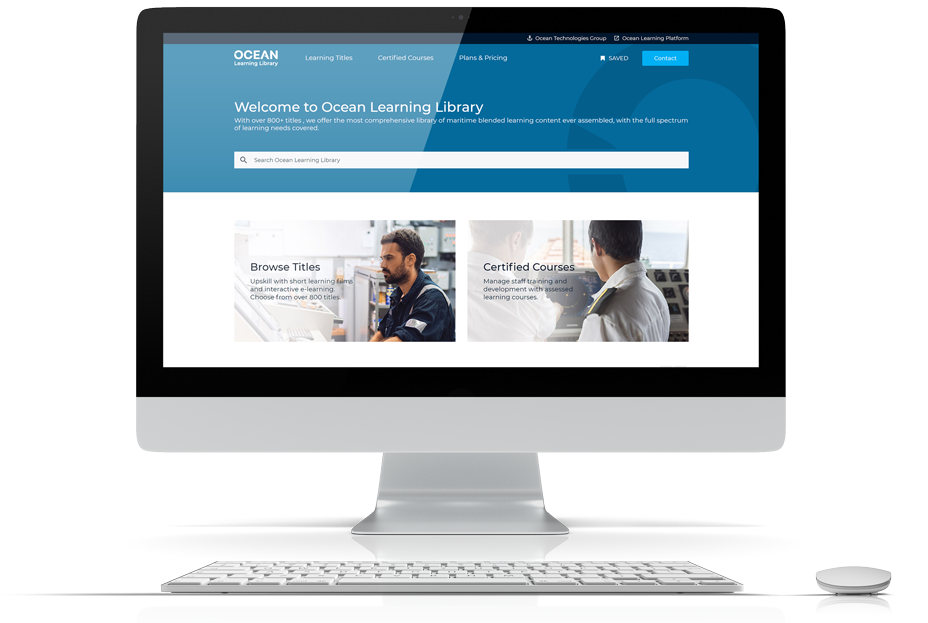
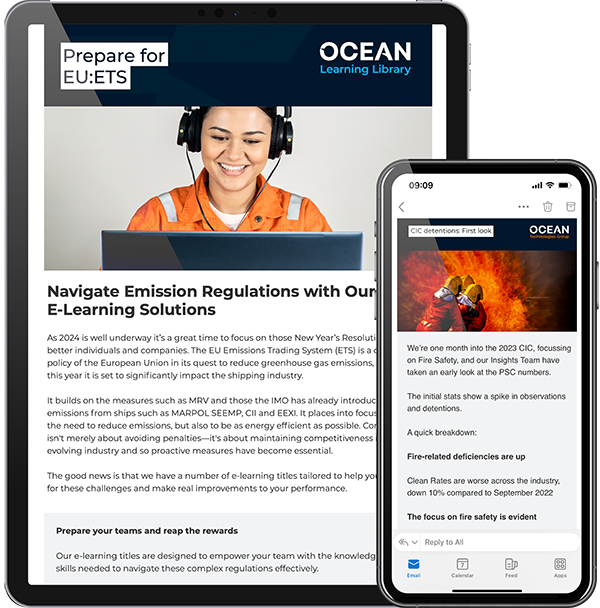
Subscribe to our Newsletter
Stay connected with our guides, insights, news and more.
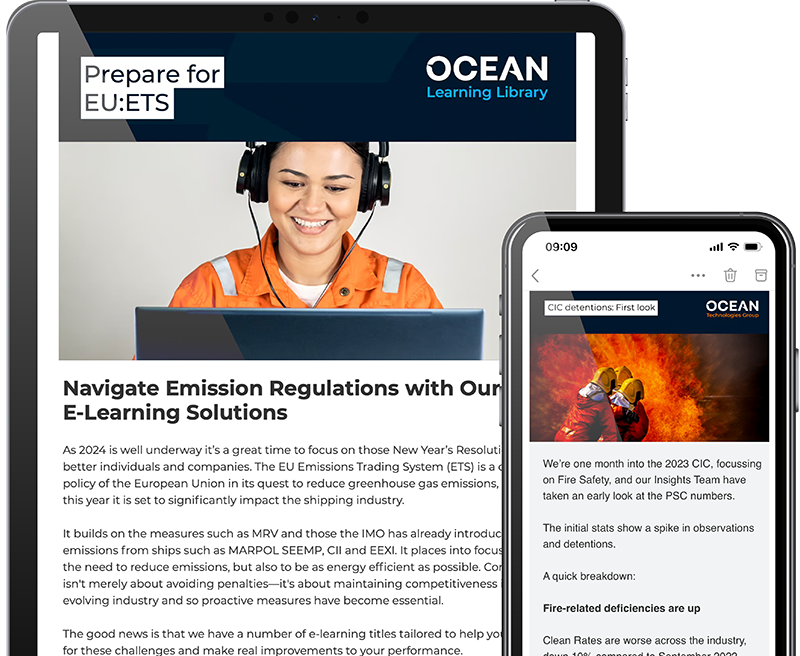
Subscribe to our Newsletter
Stay connected with our guides, insights, news and more.
Read related blogs
Insights from the “G20 Ocean Dialogue – A Maritime Just Transition”
Insights from the “G20 Ocean Dialogue – A Maritime Just Transition” As supporters and contributors to the work of the Maritime Just Transition Task force shaping the training standards for new fuels, OneOcean & Ocean Technologies Group participated alongside...
Transitioning The Cruise Industry to New Fuels
Transitioning The Cruise Industry to New FuelsThe cruise industry is the most technologically advanced sector within the maritime industry. Therefore, considering international regulatory efforts to significantly reduce carbon emissions over the coming years, it is no...
Are we ready to embrace Ammonia as a Maritime Fuel?
Are we ready to embrace Ammonia as a Maritime Fuel?With the global maritime industry grappling with the urgent need to reduce its carbon footprint, ammonia is quickly emerging as a viable alternative fuel. The impending arrival of the first ammonia-powered vessels by...

